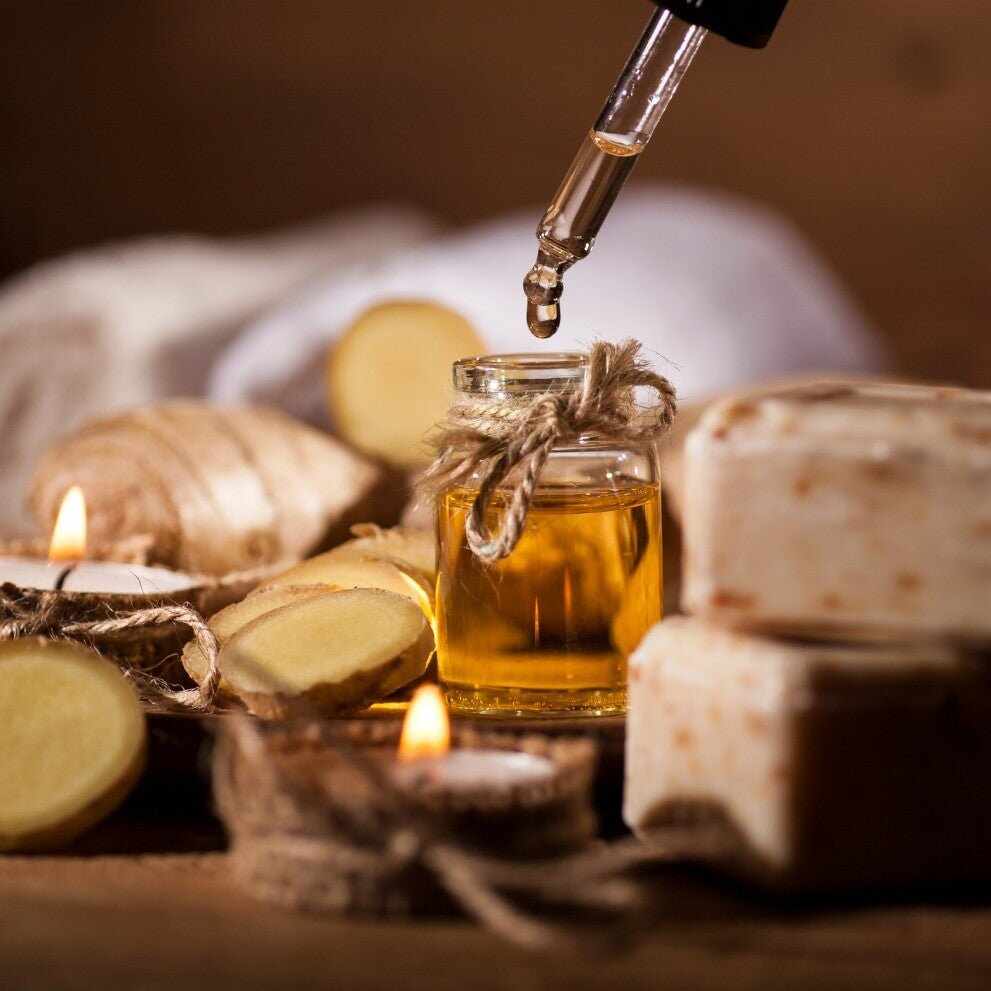Vegetable oils are our essential cosmetic allies to take care of our skin and hair essential cosmetic products to take care of our skin and hair. Let's find out how to store vegetable oils.
What is the correct storage method for vegetable oils and oleolites?
In the bathroom, in the bedroom, in the fridge, but where do you put the oil you just bought to preserve it in the best way?
Storing vegetable oil properly is essential to keep it healthy and active.
The risks of incorrect storage of natural vegetable oils are mainly two:
- Oxidation and loss of functional active ingredients
- Organic decay and bacterial proliferation
Both risks should be avoided, but if with the first the oil will no longer have beneficial effects, in the second and more dangerous case the spoiled oil could cause infections, especially in delicate areas such as eyes and lips.
Environmental factors that affect vegetable oils
The main environmental factors that interfere with the conservation and integrity of vegetable oil are: heat, light, air and humidity.
-
Heat: Vegetable oils can lose their properties if they are stored at excessive temperatures. Vegetable oils are divided into thermolabile and non-thermolabile. Thermolabile are oils that do not tolerate high temperatures.
-
Light: Light causes vegetable oil to oxidize. That is why they should always be stored in dark bottles.
- Air and Humidity: Both exposure to air and excessive humidity can cause oil to go rancid.
How to store vegetable oils
Now that we have seen the main risk factors, let's move on to the indications for optimally preserving a natural vegetable oil.
• Vegetable oils should be stored in a dark, tightly closed bottle, preferably glass. If you have a clear bottle, you can wrap it in cloth or aluminum foil to protect the oil from light.
• No to sudden changes in temperature: this helps to preserve the integrity of the functional active ingredients.
If you need to use an oil that has solidified, such as coconut oil in the winter, take only the amount you need and melt it near a radiator or in a double boiler.
• Avoid keeping it in the bathroom, there is too much humidity . This advice is valid for all cosmetics, but for oils that do not contain preservatives this is a necessary precaution for good preservation of the product.
• Do not transfer from one bottle to another and do not mix residues of the old oil in the new bottle. I know it is very tempting to clear the shelves, but better not to risk it!
• Take the oil with a dropper (or a teaspoon if it has solidified). Remember that the dropper should never be placed on the skin, even if many videos have led us to believe otherwise: our skin is inhabited by millions of bacteria that keep it healthy, but that could contaminate your oil.
How long does vegetable oil last after opening?
The shelf life of a vegetable oil after opening varies from 6 months to 4 years.
One of the factors that determines its duration is the thermolability that we talked about above. The more an oil is susceptible to heat, the more perishable it is, the shorter its duration will be.
Olive oil is not very thermolabile and can last up to 4 years after opening without altering, if well stored.
It is best to store oils that are affected by d in a place that is as cool and dry as possible.
Thermolabile oils
• Sweet almond oil (PAO up to 1 year)
• Linseed oil (PAO 6 months)
• Rosehip oil (PAO months)
• Blackcurrant oil (PAO 6 to 9 months)
• Wheat germ oil (PAO 1 year)
• Pumpkin seed oil (PAO 1 year)
• Carrot oleolite (PAO 1 year)
• Hemp oil (PAO 1 year)
• Oleolites (PAO 1 year)
Non-thermolabile oils
These oils are more heat resistant and tend to last longer (but this category also includes oils that last up to 6 months, but they tolerate higher temperatures better). They are those that can be heated in the case of cosmetic preparations.
• Olive oil (PAO 2 years)
• Argan oil (PAO 2 years)
• Jojoba oil (PAO over 1 year)
• Andiroba oil (PAO months - 1 year)
• Avocado oil (PAO 1 year)
• Baobab oil (PAO 2 years)
• Marula oil (PAO 2 years)
• Coconut oil (PAO 2 years)
• Shea butter (PAO 1 year)
• Macadamia oil (PAO 1 year)
• Castor oil (PAO 2 years)
• Sesame oil (PAO 1 year)
• Grapeseed oil (PAO 1 year)
• Tocopherol/Vitamin E (PAO 2 years)
Remember, in any case, to always check the product before each use and always respect the PAO or expiry date indications on the label.
How to tell if a vegetable oil is still good?
To carry out a check, two factors must be taken into account: smell and appearance.
A rancid oil has:
- a sour smell, rather than a pleasant one
- a dull appearance instead of a clear one
The presence of lumps is also an indication of an alteration in the integrity of the oil, except in the case of oils that have low solidification points such as coconut oil which solidifies at 25°.
If you have doubts about the quality of the product, do not use it, but dispose of it correctly according to the provisions of your Municipality.








